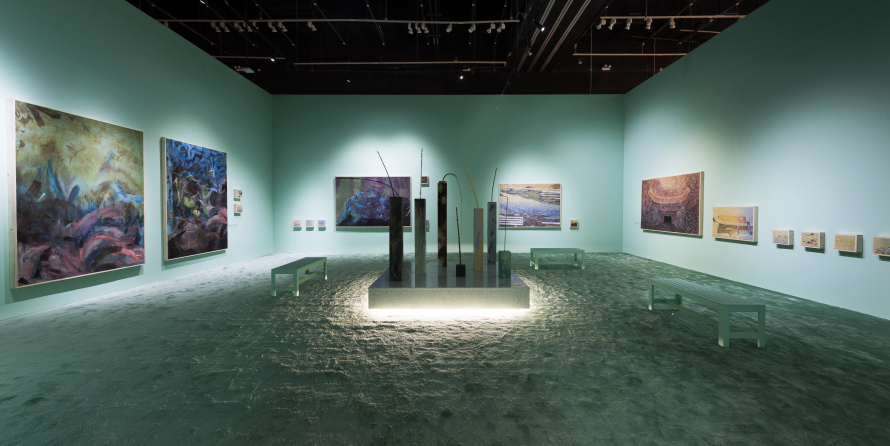Neither Sam Bardaouil nor Till Fellrath, co-curators of exhibitions at NYU Abu Dhabi, the Art Dubai Fair and the Venice Biennale’s United Arab Emirates pavilion, are from the UAE. But their international curatorial practice, Art: Reoriented, finds a natural home in this very international nation.
“Abu Dhabi is an example of a 21st-century city,” according to Bardaouil, describing the bustling, futuristic capital of a country that only turned 50 this year. Counting expatriates as 75 percent of the population, he adds that “people from diverse cultural backgrounds”—from Asia, Africa, the Arab states and beyond—“are here to carve out ways for themselves, and the result is a close proximity of different ways of life and cultural affinities.” It’s a formula that bears a clear affinity with Art: Reoriented, a platform Lebanese-born Bardaouil and German-born Fellrath (who now both live in Munich, as newly appointed directors of the Hamburger Banhof) co-founded in 2009. Looking to emphasize regions that are often excluded or roundly oversimplified by Western art history, they’ve frequently turned to the underrepresented artists of the Middle East.

The region has undergone “radical transformation,” in the last decade or so, says Fellrath; the Louvre Abu Dhabi, various artistic institutions and the Abu Dhabi Art fair are all located on the manmade Saadiyat Island, a tract of land that simply did not exist 15 years ago. As a result of the UAE’s efforts to present itself as a major cultural hub on the international stage, “I think we're seeing the benefits of these initiatives and investments into art,” Fellrath says, referring to the small, homegrown art scene now taking hold.
Having built a strong relationship with the region’s rapidly expanding art scene over the years, he and Bardaouil co-curated the “Beyond: Emerging Artists” exhibition at the latest edition of Abu Dhabi Art, which offered three local artists the opportunity and mentorship to create their own installations. This year, the co-curators chose Christopher Benton, Maitha Abdalla, and Hashel Al Lamki—three multidisciplinary talents who express sentiments that are both specific to living in the UAE and, at the same time, very universal to the human condition, furthering the point that art should not be categorized in such narrow boxes as region or medium.

Benton represents the great melting pot of the UAE, says Fellrath, as “an American who lived here for 10 years and is now back in the U.S. in grad school at MIT” while Emirati artist Abdalla’s work has a surrealist feel, invoking the folkloric imagery of Arab legends, as well as the more mundane memories of adolescence. Fellow Emirati Al Lamki uses his art to meditate on the rapid cultural and architectural development of his country.

Each artist’s installation for Abu Dhabi Art has a critical edge, some more overtly than other. Benton’s “The World Was My Garden” focuses on the date, a ubiquitous fruit whose cultivation coincides with forced labor and ongoing issues of race and class in both the Gulf and back in the Coachella Valley of California. Like all her work, Abdalla’s “Too Close to the Sun” explores themes of female empowerment—the straddling of multiple worlds and embrace of wild tendencies. Meanwhile “Neptune” by Al Lamki considers the possibilities of leaving industry behind and returning to a nomadic, Bedouin lifestyle, the origin of the nation.
The themes presented by emerging artists at the fair are a marker of a society that may be evolving toward greater tolerance to artistic license. “Every cultural intuitive that we have seen evolve here over the last few years has contributed to changing the cultural DNA of the city,” says Bardaouil. “It is an exciting moment to be here.”










 in your life?
in your life?

